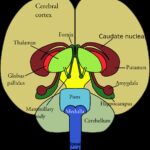Attention is the cognitive process that allows us to selectively focus on specific stimuli while filtering out others. It is the spotlight of the mind, enabling us to process information efficiently and respond to our environment. In this blog, we will delve into the various forms of attention and explore prominent models that seek to unravel the intricacies of this fundamental cognitive function.
I. Forms of Attention:
- Selective Attention:
- Involves concentrating on a particular stimulus while ignoring others.
- Enables the brain to allocate resources to relevant information.
- Central to tasks that require concentration and focus.
- Divided Attention:
- The ability to focus on multiple stimuli or tasks simultaneously.
- Commonly associated with multitasking.
- Requires cognitive flexibility and efficient processing.
- Sustained Attention:
- The capacity to maintain focus on a single task over an extended period.
- Crucial for activities that demand prolonged concentration, such as reading or studying.
- Executive Attention:
- Involves goal-directed behavior and decision-making.
- Requires higher-order cognitive processes to prioritize and organize information.
- Spatial Attention:
- Pertains to focusing on a specific location in space.
- Essential for tasks like driving, where attention must be directed to different areas.
II. Models of Attention:
- Broadbent’s Filter Model:
- Proposes an early selection mechanism in which information is filtered based on physical characteristics before reaching conscious awareness.
- Relevant stimuli pass through a selective filter, while irrelevant information is discarded.
- Treisman’s Attenuation Model:
- Suggests that rather than a strict filter, there is a flexible attenuator that weakens the processing of irrelevant information.
- Allows for some processing of unattended stimuli, depending on their significance.
- Deutsch and Deutsch’s Late Selection Model:
- Posits that all stimuli are fully processed for meaning, and selection occurs after semantic analysis.
- Relevance determines which information reaches consciousness.
- Norman and Shallice’s Supervisory Attentional System (SAS):
- Introduces the concept of a supervisory attentional system that monitors and manages the flow of information.
- Critical for overriding automatic responses and adapting to changing task demands.
- Posner’s Attentional Networks Model:
- Identifies three networks: alerting, orienting, and executive control.
- Alerting prepares the mind for incoming stimuli, orienting directs attention to specific locations, and executive control manages conflict and resolves issues.
- Corbetta and Shulman’s Dual Pathway Model:
- Proposes two attentional networks: the dorsal frontoparietal network for goal-directed attention and the ventral frontoparietal network for stimulus-driven attention.
Conclusion:
Attention is a multifaceted cognitive function that plays a pivotal role in shaping our perception and interaction with the world. As we navigate through the various forms of attention and explore the intricacies of attentional models, we gain valuable insights into the mechanisms that govern our cognitive processes. Understanding attention not only enhances our knowledge of the mind’s inner workings but also holds practical implications for fields such as education, psychology, and technology, where optimizing attentional resources is key to improving performance and well-being.







